Have you come across an incomprehensible term like fat vaccine and want to know what the procedure is? There is nothing easier than getting an answer to this question. This is breast augmentation with fat. That is, the lipofilling bust known by most women. It has to do with the procedure: the pros and cons we will discuss today.
Fat injection under a microscope
The method is based on "catching two birds with one stone":
- Removal of adipose tissue from problem areas of the body.
- Transplantation into the mammary glands.
So you get a lush bust and an elegant line of hips, legs or a toned belly. It is from these places that much-needed oil is extracted. Surgeons recommend using liposuction. The formation of the body by removing or applying its own fat deposits has been practiced for more than a century. Modern technology makes it as safe as possible for patients.
The main condition for a positive result from this procedure is to maintain the viability of adipose tissue during transplantation. "Dead fat" will not only melt, but also improve your image. However, it can also cause the growth of connective tissue at the site of transplantation (fibrosis).
And this process significantly complicates the apparatus methods for studying the condition of the mammary glands, and can lead to an overdiagnosis of the growth of neoplasms in this area. That is, the issue of proper liposuction and proper transplantation is not far off. For the procedure to be successful, it is performed under sterile conditions using special equipment.
At all stages of implementation, contact of adipose tissue with oxygen is not allowed to prevent oxidation.
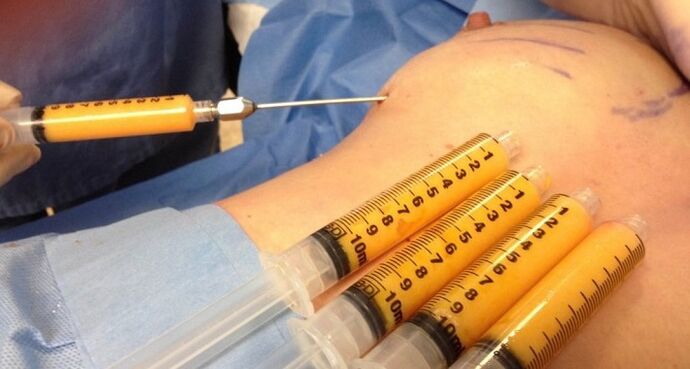
Advantages of the procedure
Lipofilling is a small operation. It can be done under local or general anesthesia. The first is preferable for the patient's cardiovascular system. Its main advantages are:
- minimal invasiveness / trauma (compared to endoprosthesis);
- high survival rate of "donor" tissues;
- minimal risk of allergies (compared to the use of hyaluronic acid-based fillers). Allergies can be caused by anesthetic drugs;
- absence of visible scars, even subtle wounds;
- the ability to "order" the shape of the chest, to repeat the procedure to increase the bust by more than 1 size after a few months, to re-correct the breast if necessary;
- to restore asymmetry in the defect of congenital / acquired forms;
- you are allowed to use your own oil, even if other methods are the opposite;
- operations on the breast, to correct the shape of the breast after removal of the implant. Such an opportunity is often used by elderly patients and young women when it is not possible to replace / install an endoprosthesis (eg, allergy to the material);
- relatively short rehabilitation period;
- complete naturalness of the shape of the mammary glands after natural sensations during manipulation and palpation;
- An added bonus to the procedure is the rejuvenation of the tissues at the site of fat injection.
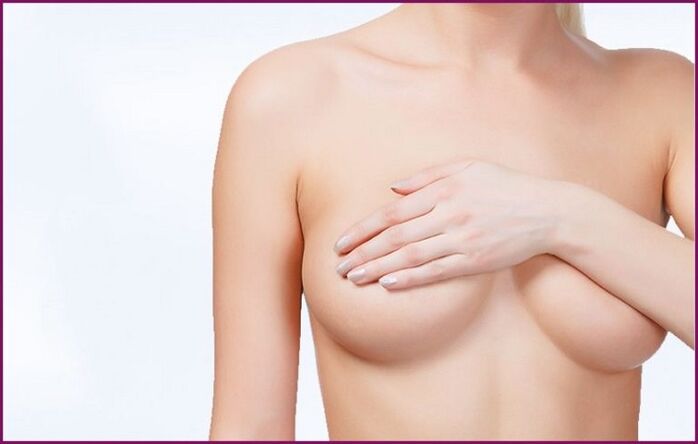
Proponents of the method are convinced that the fat vaccine gives long-term, almost lifelong results. Opponents say a second procedure will be needed for a maximum of two years. The truth is that every organism is unique. With good tissue closure, the result can last 5-10 years. Provided that you do not gain weight or become pregnant.
Correction is most likely needed after pregnancy. However, in some patients, the actual injected adipose tissue is absorbed within 1, 5-2 years. And the volumes returned to the previous unsatisfactory.
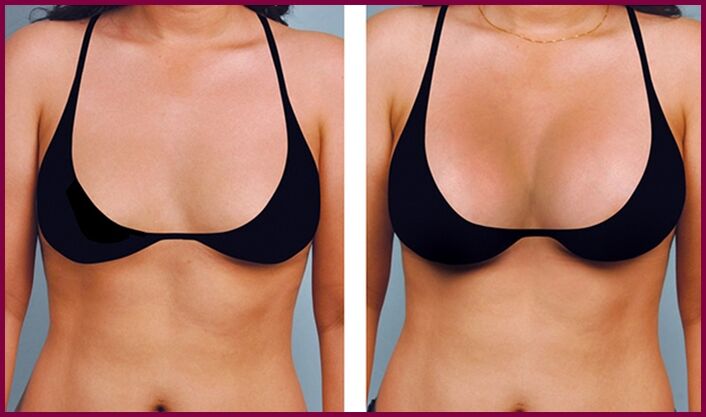
Before deciding on or abandoning the procedure, evaluate the results of a bust augmentation with your own oil in the photo.
Limitations of lipofilling
There are a number of limitations and disadvantages to increasing your bust with fat:
- ability to increase the volume only by 0. 5-1 size (pump in approximately 150-200 ml of oil);
- risk of resorption of injected oil after 0, 5-2 years;
- surgical difficulty (lack of material) for very thin women;
- presence of contraindications (absolute and relative);
- the development of fibrosis foci, which reduces the likelihood of death of part of the fatty material during application and the reliability of the apparatus for breast examination in this area;
- Some preparation is required before lipofilling (quitting smoking, drinking alcohol, taking drugs that affect blood clotting).
An additional disadvantage of the procedure is the relatively high cost. If repeated courses of fat injections are required, it may be more expensive than an endoprosthesis.
Procedure tips
Subcutaneous fat from other parts of the body enters the chest:
- with a lack of tissue for prosthesis implantation (by covering the edges with existing tissue);
- a woman does not want to apply for an endoprosthesis;
- In case of deterioration of tissue condition after pregnancy, breastfeeding, hormonal crisis, acute weight loss, a small adjustment is needed.
Some women use lipofilling as a trial intervention. They look at what the breast will look like and how much it needs to be enlarged before deciding on an endoprosthesis.
When is the procedure not recommended?
Absolute contraindications include:
- with severe somatic diseases (heart disease);
- mental disorders;
- endocrine diseases (diabetes);
- with tumor growth;
- some systemic diseases;
- blood pathology.
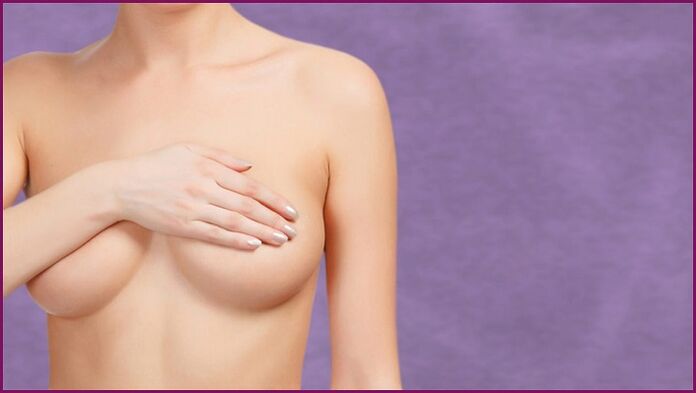
You should refrain from changing the forms that have your own oil for a while:
- during menstrual bleeding;
- with chronic pathologies during exacerbation;
- in case of an infectious disease (acute period);
- during pregnancy and lactation. You can return to breast augmentation 12 months after you stop breastfeeding.
After recovery, lipofilling is very favorable for relatively healthy women after achieving a stable remission and cessation of menstruation. If you are addicted to smoking, you should not enlarge your breasts in this way. Smoking has a very negative effect on the duration of the procedure.
Stages of lipophilicity
The manipulation of bust resizing with the help of your oil takes place in 3 stages:
- material sampling (liposuction);
- cleaning from impurities (for example, blood);
- lipophilic or "injection" of the skin with subcutaneous fat, which is actually removed from the problem areas by vacuum suction.
A few hours after the procedure, the patient can go home safely.
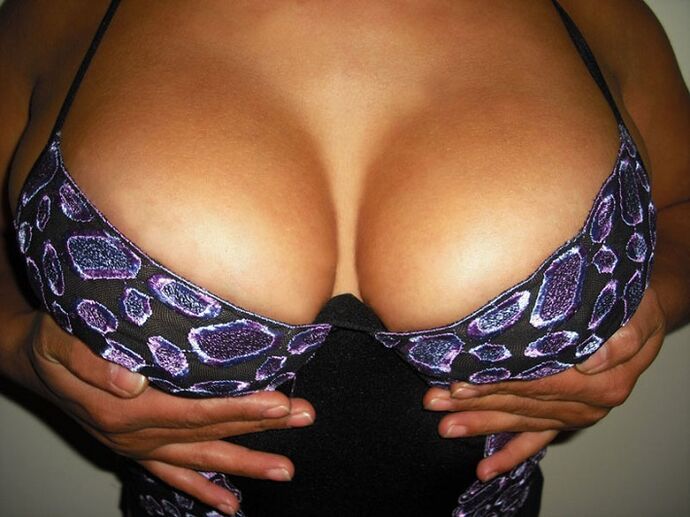
Rehabilitation
The rehabilitation period includes:
- special underwear, then a bra with a wide belt to prevent mastoptosis (fabrics should "get used" to the new breast weight and volume);
- restriction of physical activity;
- prevent the effects of temperature;
- Refrain from manual exposure to the chest for 1-2 months after the procedure.
For the first time after lipofilling, there may be discomfort in the breast area, the breast may be slightly swollen, and hematomas may form at the puncture site. These events are normally classified. They pass very quickly. The initial rehabilitation period lasts 2-4 weeks.

Puncture sites are treated with local antiseptic as directed by a physician until healing. It will be possible to fully assess the results of lipophylline within six months.


























